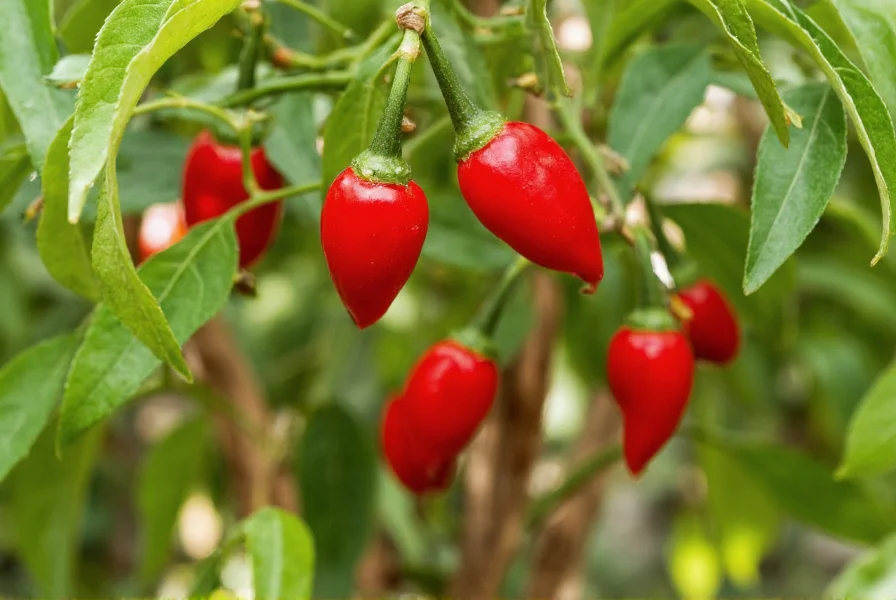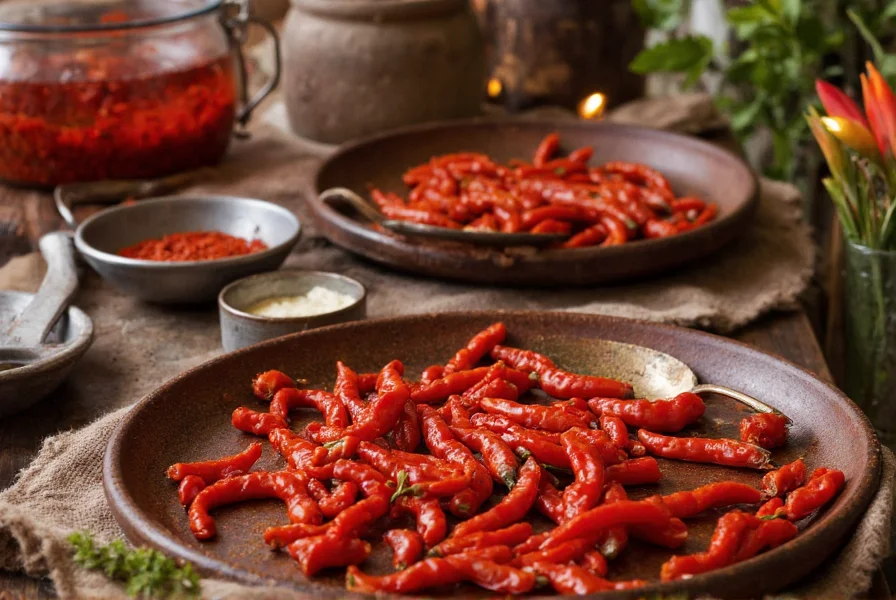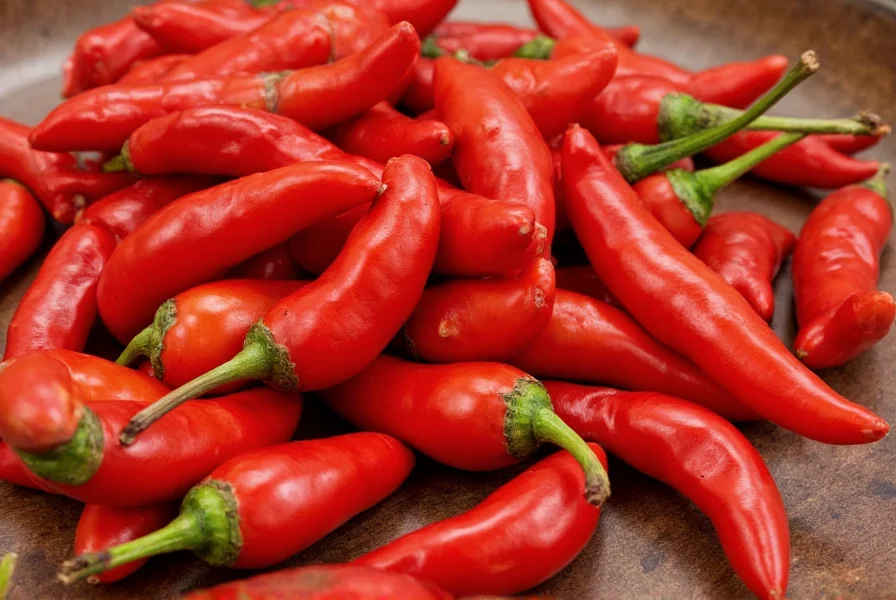When exploring what is Calabrian chili, it's essential to understand this isn't just another red pepper—it's a culinary treasure with deep cultural roots. These vibrant peppers, scientifically classified as Capsicum annuum, originate from Calabria, the 'toe' of Italy's boot-shaped peninsula. Calabrian chilies stand out for their unique balance of heat and fruitiness, making them prized by chefs worldwide.
Origin and Historical Significance
Calabrian chilies have been cultivated in southern Italy since the 16th century, shortly after chili peppers were introduced to Europe from the Americas. The Mediterranean climate of Calabria—with its hot, dry summers and mild winters—creates ideal growing conditions that develop the pepper's distinctive flavor profile. Unlike mass-produced chili varieties, authentic Calabrian chilies are often grown using traditional methods passed down through generations.
Physical Characteristics and Heat Profile
Measuring approximately 2-3 inches long with a tapered shape, Calabrian chilies transition from green to a brilliant red when fully ripe. Their heat level sits between 2,500 and 30,000 Scoville Heat Units (SHU), placing them in the medium range—hotter than jalapeños but milder than habaneros. What truly distinguishes Calabrian chili heat level is its gradual build rather than an immediate punch, allowing the complex flavor to shine through.
| Chili Variety | Scoville Heat Units | Flavor Profile |
|---|---|---|
| Calabrian Chili | 2,500-30,000 SHU | Fruity, smoky, moderate heat |
| Jalapeño | 2,500-8,000 SHU | Grassy, bright |
| Red Pepper Flakes | 5,000-50,000 SHU | Generic spicy, less nuanced |
| Habanero | 100,000-350,000 SHU | Tropical fruit, intense heat |
Culinary Applications and Forms
Chefs value Calabrian chilies for their versatility. They're commonly found in several forms:
- Fresh: Used in traditional Calabrian dishes like 'nduja
- Dried: Often crushed into flakes for seasoning
- Paste: The popular Calabrian chili paste combines peppers with olive oil and salt
- Oil: Infused olive oil carrying the pepper's essence
The paste form has gained international popularity, appearing in everything from pizza toppings to aioli enhancements. Unlike generic red pepper flakes, authentic Calabrian chili paste delivers a more nuanced flavor with its characteristic fruity undertones.

Calabrian Chili vs Similar Varieties
Many confuse Calabrian chilies with standard red pepper flakes, but significant differences exist. While Calabrian chili vs red pepper flakes might seem similar at first glance, the Italian variety offers a more complex flavor profile with distinct citrus notes. Most commercial red pepper flakes come from multiple chili varieties blended together, whereas authentic Calabrian product maintains regional consistency.
Substitution Guidance
If you're wondering where to buy Calabrian chilies and can't find them, suitable substitutes include:
- A blend of cayenne and a touch of smoked paprika
- Guajillo peppers for the fruitiness with some heat
- Crushed Aleppo pepper with a dash of citrus zest
However, these alternatives won't perfectly replicate the unique characteristics that make Calabrian chilies special. When possible, seek authentic products labeled with the Protected Geographical Indication (PGI) status granted to genuine Calabrian chili products.
Storage and Handling Tips
To preserve freshness, store fresh Calabrian chilies in a paper bag in the vegetable crisper. For longer storage, freeze whole peppers on a baking sheet before transferring to freezer bags. Dried forms should be kept in airtight containers away from light and heat. When handling these peppers, especially when cutting fresh ones, wear gloves to avoid transferring capsaicin to sensitive areas.
Cultural Importance in Calabrian Cuisine
In Calabria, chili peppers aren't just an ingredient—they're a cultural symbol. The region consumes more chili peppers per capita than anywhere else in Italy. Traditional dishes like 'pasta 'nduja' (pasta with spicy spreadable salami) and 'fileja' (a local pasta shape) showcase the pepper's importance. Many Calabrian households still dry and crush their own chilies each harvest season, maintaining practices unchanged for centuries.

Frequently Asked Questions
What makes Calabrian chili different from regular chili peppers?
Calabrian chilies originate from a specific region in southern Italy and have a distinctive flavor profile combining moderate heat (2,500-30,000 SHU) with pronounced fruitiness and subtle smokiness. Unlike generic chili peppers, authentic Calabrian varieties maintain consistent characteristics due to their protected geographical status and traditional cultivation methods.
How spicy are Calabrian chilies compared to other common peppers?
Calabrian chilies range from 2,500 to 30,000 Scoville Heat Units, placing them in the medium heat category. They're generally hotter than jalapeños (2,500-8,000 SHU) but milder than habaneros (100,000-350,000 SHU). What sets them apart is their gradual heat build-up rather than an immediate burn, allowing their complex flavor to shine through before the heat intensifies.
Can I substitute Calabrian chili paste in recipes?
Yes, but with caveats. For Calabrian chili substitutes, try mixing crushed red pepper flakes with a touch of smoked paprika and lemon zest. Alternatively, use a combination of cayenne pepper and a mild chili like guajillo. However, these substitutes won't perfectly replicate the unique fruity, smoky complexity of authentic Calabrian chili paste, which has become popular in dishes ranging from pasta to pizza toppings.
Are Calabrian chilies the same as 'peperoncino'?
Yes, 'peperoncino' (plural: 'peperoncini') is the Italian term for chili peppers, and in Calabria specifically refers to their local variety. While 'peperoncino' can technically describe various chili types throughout Italy, when used in the context of Calabrian cuisine, it specifically denotes this regional specialty with its characteristic shape, heat level, and flavor profile that has been cultivated in the region for centuries.











 浙公网安备
33010002000092号
浙公网安备
33010002000092号 浙B2-20120091-4
浙B2-20120091-4